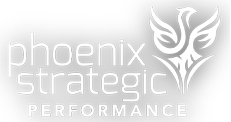This blog was co-authored by Joanne Flynn, Jim Bosserman, and Debbie Gower. This article combines perspectives and research from three strategic performance and learning and development professionals.
What is the role of Learning & Development (L&D) in an organization’s growth and transformation?
What is the role of L&D in dealing with continuous change?
6 Key L&D Strategic Issues
Learning & Development is critical to an organization’s success. Although the “war for talent” focused attention and efforts on recruiting since the late 1990’s[1], the “war to develop talent”[2] recently emerged more prominently on CEO agendas. Why? Concerns over talent shortages and skill gaps have created obvious obstacles to achieving business performance and transformation goals.
As a result, the investment and ROI to elevate organizational learning functions has become just as, if not more, important as “buying” talent through the recruiting function.






